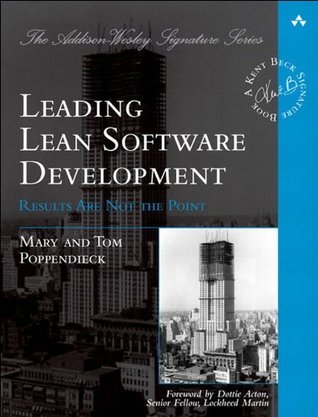What do you think?
Rate this book


Building on their breakthrough bestsellers Lean Software Development and Implementing Lean Software Development, Mary and Tom Poppendieck’s latest book shows software leaders and team members exactly how to drive high-value change throughout a software organization—and make it stick. They go far beyond generic implementation guidelines, demonstrating exactly how to make lean work in real projects, environments, and companies.
The Poppendiecks organize this book around the crucial concept of frames, the unspoken mental constructs that shape our perspectives and control our behavior in ways we rarely notice. For software leaders and team members, some frames lead to long-term failure, while others offer a strong foundation for success. Drawing on decades of experience, the authors present twenty-four frames that offer a coherent, complete framework for leading lean software development. You’ll discover powerful new ways to act as competency leader, product champion, improvement mentor, front-line leader, and even visionary.
Systems thinking: focusing on customers, bringing predictability to demand, and revamping policies that cause inefficiency Technical excellence: implementing low-dependency architectures, TDD, and evolutionary development processes, and promoting deeper developer expertise Reliable delivery: managing your biggest risks more effectively, and optimizing both workflow and schedules Relentless improvement: seeing problems, solving problems, sharing the knowledge Great people: finding and growing professionals with purpose, passion, persistence, and pride Aligned leaders: getting your entire leadership team on the same page
From the world’s number one experts in Lean software development, Leading Lean Software Development will be indispensable to everyone who wants to transform the promise of lean into reality—in enterprise IT and software companies alike.
441 pages, Kindle Edition
First published January 1, 2009